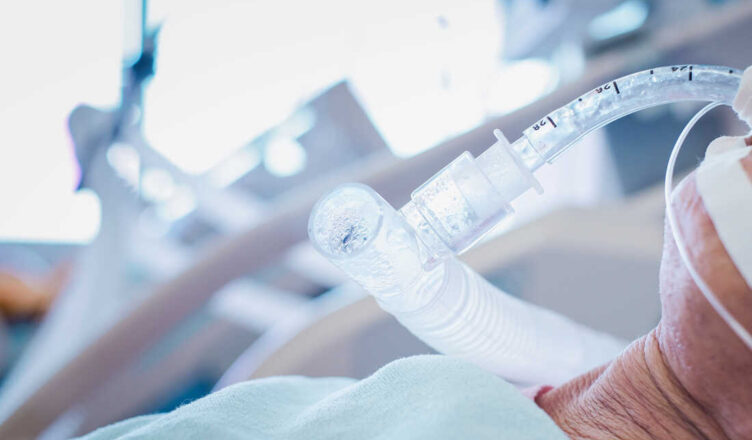ECMO is a type of life support used to aid people critically ill with lung and heart diseases or those awaiting a heart transplant or recovering from it. ECMO is a viable option when all other life-saving measures have failed. Although it can not treat or cure lung or heart diseases, it can assist the patient when their body cannot give adequate oxygen to their tissues. It employs an external machine that circulates the blood, oxygenates it, and helps the body remove carbon dioxide.
What is ECMO?
Extracorporeal Membrane Oxygenation, also known as ECMO, is a medical procedure for patients who require external cardiac or respiratory support. An ECMO treatment is administered to patients whose heart or lungs cannot function well.
ECMO provides artificial support when a patient has lung and heart problems that have not improved despite receiving support from ventilators and inotropes. It is a go-to when all other options have failed, as the heart and lungs get adequate rest during ECMO treatment.
How Does ECMO Work?
A perfusionist, highly trained in running the ECMO equipment, administers the ECMO treatment. The patient is first sedated and relaxed. A doctor then inserts plastic tubes known as cannulas into the patient’s major arteries and veins in the leg, chest, or neck. The ECMO machine will be connected to these cannulas.
Blood is drained into a plastic pouch, or bladder, via a single cannula. The blood then travels through the ECMO machine by a pump that functions as a temporary heart and is tailored to the patient’s requirements throughout treatment. The perfusionist constantly monitors the patient and adjusts the ECMO machine settings accordingly.
The blood is then circulated through a membrane oxygenator, a form of the artificial lung. This device, like the lungs, adds oxygen to the blood and eliminates carbon dioxide. After passing via the artificial lung, the blood is warmed as per the body temperature by a heat exchanger. Finally, blood is reintroduced into the body via another large cannula.
If the patient requires ECMO, then they are most likely already using a ventilator, which is a machine that helps with breathing. Together with the surgical team, highly experienced nurses and breathing specialists will monitor the patient’s progress. They will measure blood pressure and heart rate and regularly monitor blood oxygen and carbon dioxide levels.
How Long Does ECMO Take?
The duration of ECMO is determined by the patient’s underlying heart or lung condition. It can take a few hours or days, but it can even last for weeks under certain circumstances.
ECMO for Children
The ECMO system can replace a child’s lungs and heart while they recover from a potentially fatal (but treatable) condition. The child will be given medication to keep them comfortable and nourished and blood thinners to help prevent clotting and let the blood circulate through the ECMO equipment.
When Can ECMO be Administered?
ECMO treatment may become necessary when:
- Even with extra oxygen, the lungs cannot provide enough oxygen to the body.
- Even with a ventilator, the lungs cannot remove enough carbon dioxide.
- The heart is unable to pump sufficient blood through the body.
- The heart and lungs require assistance while waiting for an organ transplant.
Risks Associated with ECMO
There are two major risks associated with ECMO treatments.
Bleeding: This may affect up to 30-50% of patients on ECMO and can be severe. Blood thinners given for ECMO can aggravate the condition. It could be the result of surgical wounds or other reasons. The patient may need surgery to diagnose and correct the problem and should be looked for haemorrhages.
Blood Clots can detach and travel to the lungs or brain, which could be fatal. Though blood clots could harm up to 70% of patients on ECMO, healthcare providers can typically avert problems by closely monitoring patients and treating clots that form in the body or the ECMO machine’s tubes as soon as they appear.
When is ECMO Treatment Stopped?
When doctors can successfully treat the underlying heart or lung disease, ECMO treatment is gradually reduced. The perfusionist coordinates with the patient and doctors to reduce the ECMO machine’s settings and allow the patient’s heart and lungs to resume. It is done slowly and in stages so that the healthcare providers can ensure the patient’s heart and lung activity are stable. When the ECMO is no longer required, doctors remove the cannulas and shut the entry points into the body.
Conclusion
ECMO treatment is used at Max Healthcare Group for open-heart procedures. The ECMO device assists in pumping and oxygenating blood outside the body, freeing up the heart and lungs for rest. Here, the ECMO technique has a phenomenal success rate. ECMO has been effective in preserving hundreds of patients’ lives. The facility offers the best team of doctors and cutting-edge equipment to guarantee patients receive the best care.
Read More Health Blogs: pacemaker cost, first aid for dogbite.
Psoriasis Diet: Foods to Eat and Avoid If You Have Psoriasis

